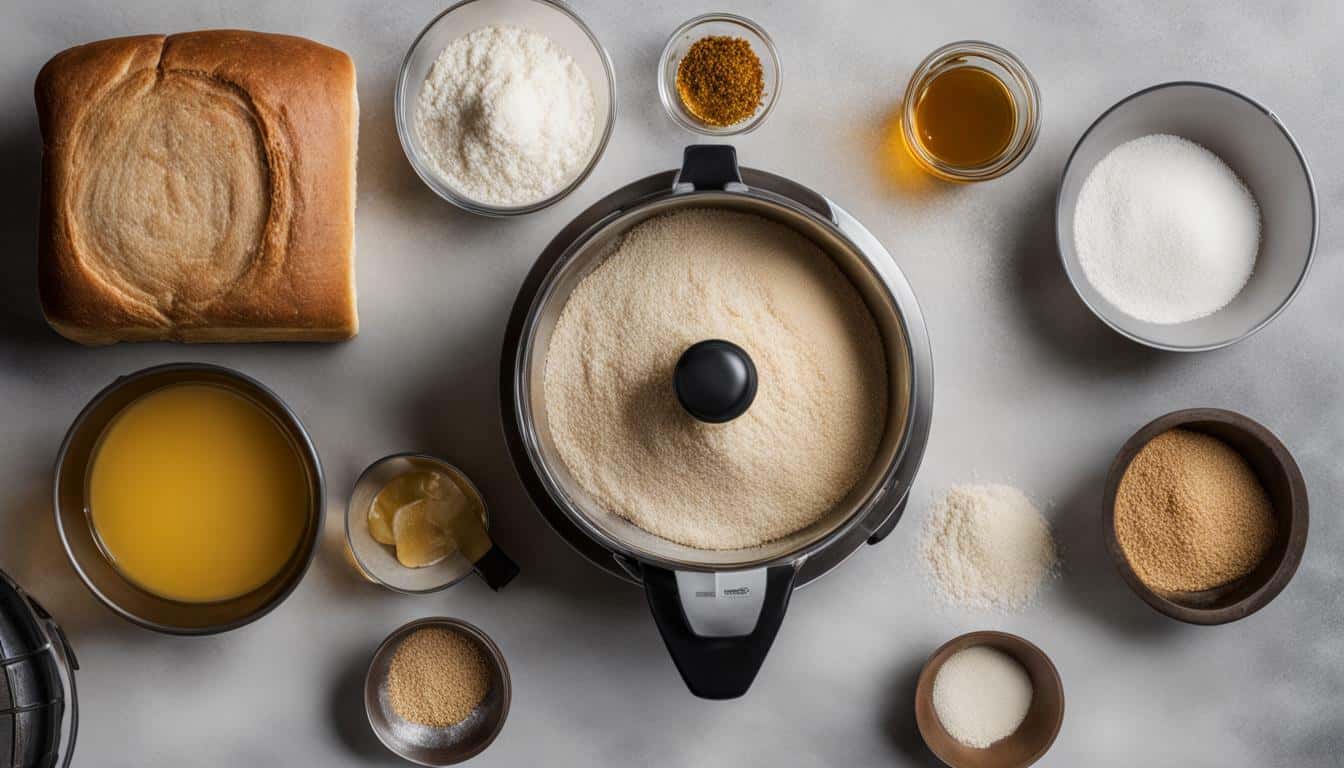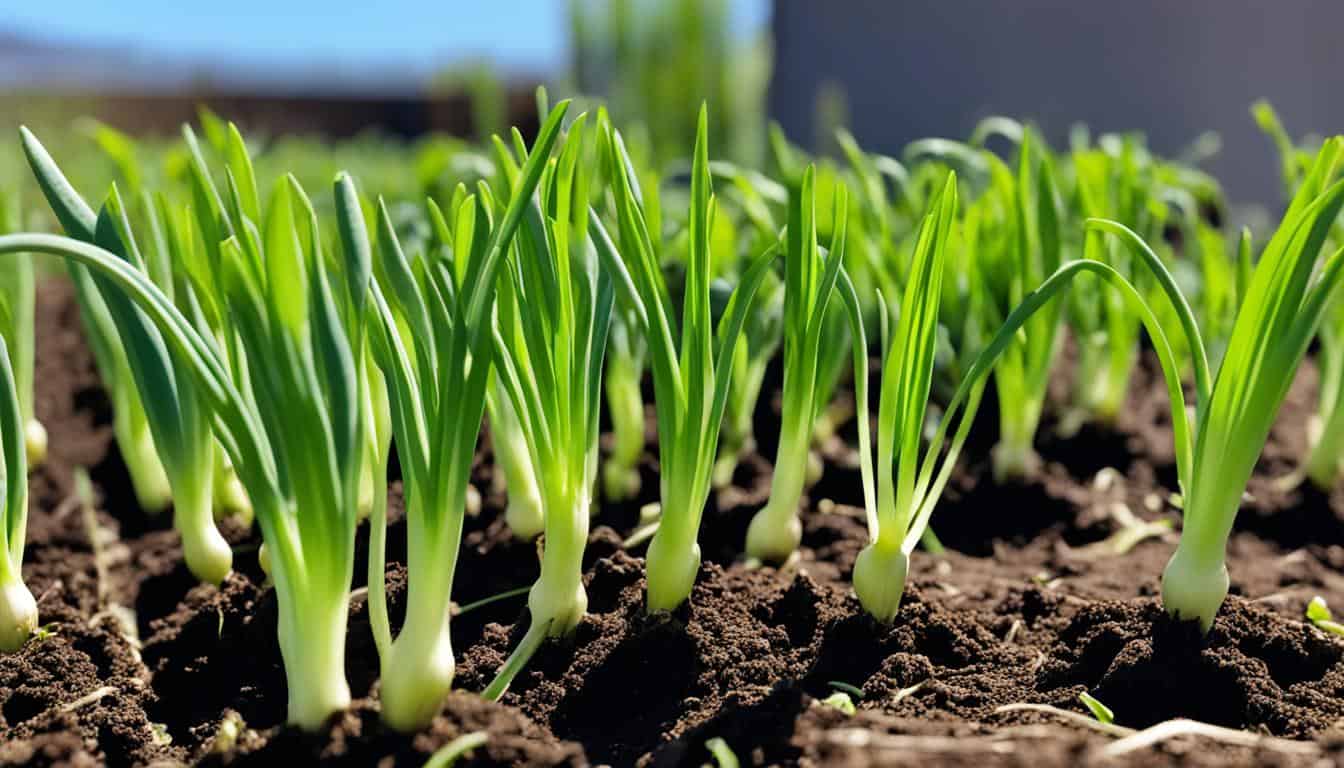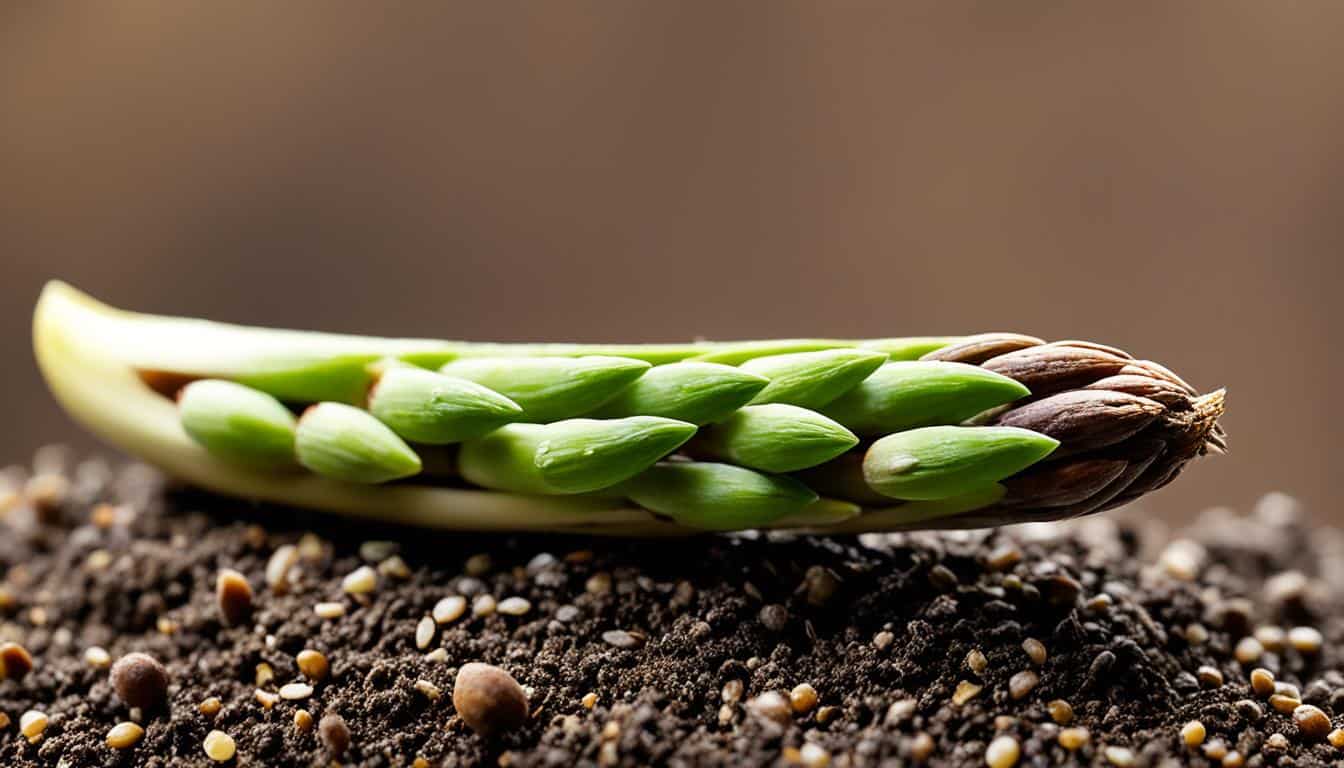When using a bread machine, the order in which you add ingredients can greatly impact the final result of your baked bread. The specific order may vary depending on the machine and recipe instructions. It’s crucial to understand the best practices for ingredient placement to ensure delicious homemade bread.
First and foremost, it’s important to read the manual that comes with your bread machine. Different machines may have specific requirements for ingredient order, and the manual will provide necessary guidance to achieve optimal results.
There are two main approaches when it comes to adding ingredients in a bread machine. Some recipes suggest adding wet ingredients first, followed by dry ingredients, and finally yeast. This method ensures proper hydration of the dough and allows for even distribution of ingredients.
On the other hand, some recipes recommend starting with flour, followed by salt and sugar, then wet ingredients, and finally yeast. This approach allows for more control over ingredient distribution and can result in a well-balanced loaf.
Regardless of the specific order, it is generally recommended to add yeast last. Yeast is a living organism that needs to be activated properly for the dough to rise. Adding it last ensures it comes into contact with the water and other ingredients at the appropriate time.
Key Takeaways:
- The best order to add ingredients in a bread machine may vary depending on the machine and recipe instructions
- Some recipes suggest adding wet ingredients first, while others recommend starting with flour
- Regardless of the order, it’s important to add yeast last to ensure proper rising
- Reading the manual for your specific bread machine is crucial
- Other tips for using a bread machine include using bread flour, room temperature liquids, and following recommended measurements and capacity
The Importance of Following Recipe Instructions
To ensure great results, it is crucial to carefully read and follow the recipe instructions provided with your bread machine. Each recipe may have specific recommendations for the order in which ingredients should be added. Following these instructions accurately will help you achieve the best outcome with your bread machine.
When it comes to the order of ingredients, some recipes suggest adding wet ingredients first, followed by dry ingredients, and finally yeast. This method is often recommended to ensure proper hydration of the dough. By adding liquid ingredients first, such as water, oil, and other liquids, you allow the dough to properly absorb the moisture before adding the dry ingredients and yeast.
On the other hand, some recipes recommend starting with flour and adding dry ingredients before the wet ones. This approach allows for more control and even distribution of ingredients. By adding flour, salt, sugar, and other dry ingredients first, you create a solid foundation for the dough before introducing the liquids and yeast.

Regardless of the specific ingredient order, it is generally recommended to add yeast last. Yeast is a living organism that needs to be activated properly for the dough to rise. By adding it last, you ensure that it comes into contact with the water and other ingredients at the appropriate time, allowing it to work its magic and create a beautifully risen loaf of bread.
In addition to following the recipe instructions for ingredient order, there are other tips to improve your bread machine baking. It is recommended to use bread flour for optimal results, as it has a higher protein content that helps create a better structure in the bread. Using bread machine yeast or dissolving active dry yeast in water before adding it to the machine can also enhance the rising process. Additionally, using room temperature liquids and following the recommended measurements and capacity of your specific bread machine will help ensure successful results.
Wet Ingredients First or Flour First?
One common debate among bread machine enthusiasts is whether to add wet ingredients first or start with flour. The truth is, there is no one-size-fits-all answer. The best order to add ingredients in a bread machine can vary depending on the specific machine and recipe instructions. However, there are some general guidelines that can help you make an informed decision.
Some recipes suggest adding wet ingredients first, followed by dry ingredients, and finally yeast. This approach is often recommended to ensure proper hydration of the dough. By adding water, oil, and other liquid ingredients before the dry ones, you allow the machine to mix them thoroughly, resulting in a well-hydrated dough.
On the other hand, other recipes recommend starting with flour, followed by salt, sugar, and other dry ingredients, and finally adding the wet ingredients and yeast. This method allows for more control and even distribution of ingredients. By starting with the dry ingredients, you create a solid foundation for the dough, which can help prevent clumping and ensure a consistent texture.
Regardless of the specific order you choose, it’s generally recommended to add yeast last. Yeast is a living organism that needs to be activated properly for the dough to rise. Adding it last ensures that it comes into contact with the water and other ingredients at the appropriate time, maximizing its effectiveness.

When using a bread machine, it’s important to read the manual for the specific machine being used. Different machines may have different requirements for ingredient order, so following the manufacturer’s instructions is crucial to achieve the best results.
Additionally, here are some other tips to enhance your bread machine baking experience. Firstly, using bread flour is recommended for the best results, as it has a higher protein content and provides better structure to the bread. However, if you prefer to use all-purpose flour, you can make some adjustments such as increasing the liquid content slightly or using a flour improver to enhance the gluten development.
Using room temperature liquids is also important, as cold ingredients can slow down the yeast activation and affect the rising process. Additionally, using bread machine yeast or dissolving active dry yeast in water before adding it to the machine can help ensure the yeast is fully activated. Lastly, always follow the recommended measurements and capacity of your specific bread machine for optimal results.
By considering these guidelines and experimenting with different ingredient orders, you can find the method that works best for you and enjoy delicious homemade bread from your bread machine.
Adding Wet Ingredients First
Adding wet ingredients first can have benefits in terms of ensuring proper moisture in the bread dough. By adding water, oil, and other liquid ingredients before the dry ingredients and yeast, you allow the dough to fully absorb the liquids, resulting in a well-hydrated and evenly mixed dough.
When you add the wet ingredients first, the dough has a better chance of reaching the right consistency. This is particularly important for bread machines, as they have specific baking cycles that require the dough to be the right texture for optimal rising and baking.
Following the order of wet ingredients first can also help prevent clumping or uneven distribution of ingredients. It allows the liquid to disperse more evenly throughout the dough, helping to ensure consistent flavor and texture in the final product.
However, it is important to note that not all bread machine recipes may follow this order. It’s always best to consult the recipe instructions and the manual of your specific bread machine to ensure you are following the recommended ingredient order for the best results.
Starting with Flour and Dry Ingredients
Starting with flour and adding dry ingredients can provide a structured and evenly mixed dough. This method is commonly used in bread machine baking and allows for better control over ingredient distribution. By starting with flour, you can ensure that the dry ingredients are evenly incorporated before adding the wet ones. This helps create a consistent texture and flavor throughout the bread.
When adding dry ingredients, it’s important to follow the recipe instructions and measure accurately. This ensures the correct balance of flavors and textures. Common dry ingredients include salt, sugar, and any additional herbs or spices. These ingredients should be thoroughly mixed into the flour to prevent any clumps or uneven distribution.
Once the dry ingredients are evenly mixed, you can proceed to add the wet ingredients and yeast according to the recipe instructions. This method allows for a well-developed dough that has a good rise and texture. Remember to read the manual of your specific bread machine to ensure you are following the recommended ingredient order for the best results.

For added flavor and texture, you can experiment with different types of flour, such as whole wheat or rye flour. Additionally, you may choose to incorporate nuts, seeds, dried fruits, or even cheese into your bread. These ingredients can be added at the appropriate step in the ingredient order, following the recipe instructions.
Some recipes may also call for the addition of vital wheat gluten, which helps improve the structure and rise of the bread. If using all-purpose flour instead of bread flour, you may need to adjust the liquid content slightly to achieve the desired consistency.
| Ingredient | Amount |
|---|---|
| Bread Flour | 2 cups |
| Salt | 1 teaspoon |
| Sugar | 1 tablespoon |
| Yeast | 2 teaspoons |
Use this basic ingredient list as a starting point for your bread machine recipes. Adjustments can be made based on your personal preferences and the specific recipe instructions. By following the recommended ingredient order and experimenting with different flavors, you can create delicious homemade bread every time.
The Role of Yeast in the Ingredient Order
The placement of yeast in the ingredient order is a critical factor in achieving a well-risen loaf of bread. Regardless of whether you choose to add wet ingredients first or start with flour, it is generally recommended to add yeast last. Why is this? Yeast is a living organism that needs to be activated properly for the dough to rise. By adding yeast last, it ensures that it comes into contact with the water and other ingredients at the appropriate time, allowing it to work its magic and create those fluffy, airy bread loaves we all love.
When it comes to bread machine baking, following the recommended ingredient order can make a significant difference in your results. While some recipes may suggest adding wet ingredients first, followed by dry ingredients, and then yeast, others may recommend starting with flour, salt, and sugar before adding wet ingredients and yeast. Ultimately, it depends on the specific machine and recipe instructions you are working with. To ensure the best outcome, it’s crucial to read the manual that comes with your bread machine as it will provide guidance on the recommended ingredient order.
Aside from the ingredient order, there are other tips to keep in mind when using a bread machine. Using bread flour is highly recommended as it has a higher protein content, resulting in better gluten development and a lighter texture. However, if you only have all-purpose flour on hand, adjustments can be made. Consider increasing the liquid content slightly or using a flour improver to enhance gluten development.

Other essential tips include using room temperature liquids to ensure proper yeast activation, using bread machine yeast or dissolving active dry yeast in water before adding, and following the recommended measurements and capacity of your specific bread machine. These small details can greatly impact the quality of your homemade bread, ensuring a delicious and well-risen result every time.
Other Tips for Using a Bread Machine
To make the most out of your bread machine baking, consider these additional tips and recommendations:
- Use bread flour for optimal results. Bread flour has a higher protein content than all-purpose flour, which helps provide a better structure and texture to your bread. If you only have all-purpose flour on hand, you can still use it, but you may need to make some adjustments to the recipe.
- Use room temperature liquids. When adding liquids to your bread machine, it’s best to use ingredients that are at room temperature. This allows the yeast to activate more efficiently and helps with the overall rise of the dough.
- Use bread machine yeast or dissolve active dry yeast in water before adding it to the bread machine. Bread machine yeast is specially formulated to provide consistent and reliable results in bread machines. If you don’t have bread machine yeast, you can use active dry yeast, but it’s important to dissolve it in warm water first to activate it.
- Follow the recommended measurements and capacity of your specific bread machine. Each bread machine has its own capacity and recommended measurements for ingredients. It’s important to follow these guidelines to ensure that the dough is properly mixed and baked.
By following these tips, you’ll be well on your way to baking delicious homemade bread with your bread machine.

The order in which you add ingredients to your bread machine can greatly impact the outcome of your baked bread. It is important to read the manual for your specific bread machine and follow any instructions provided. Most recipes suggest adding wet ingredients first, followed by dry ingredients, and yeast last. However, some recipes may recommend starting with flour and adding the remaining ingredients accordingly. Regardless of the ingredient order, it is generally recommended to use bread flour, ensure room temperature liquids, use bread machine yeast or dissolve active dry yeast in water, and follow the recommended measurements and capacity of the bread machine.
Adjusting All-Purpose Flour for Bread Machine Baking
If you don’t have bread flour on hand, you can still use all-purpose flour in your bread machine with a few modifications. While bread flour is recommended for optimal results, all-purpose flour can be a suitable substitute. Here are some adjustments you can make to ensure your bread turns out delicious and satisfying:
- Increase the liquid content slightly: All-purpose flour has a lower protein content compared to bread flour, which affects gluten development. To compensate for this, you can increase the liquid content in your recipe by adding approximately 1-2 tablespoons of water or milk per cup of all-purpose flour used. This will help maintain the proper hydration of the dough.
- Consider using a flour improver: To enhance gluten development and improve the texture of your bread, you can also use a flour improver or dough enhancer. These products are specifically designed to improve the performance of all-purpose flour in bread baking, and they can help create a lighter and more flavorful loaf.
Remember, the adjustment may vary depending on the specific recipe and bread machine you’re using. It’s always a good idea to consult the manual for your bread machine and follow any additional instructions or recommendations provided by the manufacturer.
Using all-purpose flour in your bread machine is a convenient option when you don’t have bread flour readily available. With a few modifications, you can still achieve a delicious homemade loaf. So don’t hesitate to try it out and experiment with different recipes to find your perfect all-purpose flour bread!

| All-Purpose Flour | Bread Flour |
|---|---|
| Lower protein content | Higher protein content |
| May yield a slightly denser loaf | Results in a lighter, more airy texture |
| Can be used with adjustments | Recommended for optimal results |
Reading the Manual and Understanding Your Bread Machine
Familiarize yourself with the instructions and recommendations provided in your bread machine’s manual to achieve optimal results. Each bread machine has its own specific requirements and guidelines for ingredient order. By understanding these instructions, you can ensure that you’re using your machine correctly and producing delicious homemade bread.
When reading the manual, pay close attention to the section on ingredient order. This information will outline the exact steps you need to follow when adding ingredients to your bread machine. It may specify whether wet ingredients should be added first, followed by dry ingredients, or vice versa. The manual may also provide insights into the role of yeast and when it should be added in the process.
Additionally, the manual will provide guidance on any specific features or settings that your bread machine offers. This knowledge can help you make the most of your machine and understand how it affects the ingredient order. Some machines may have specific programs for different types of bread or allow for adjustments to the kneading or rising process.
| Tip | Recommendation |
|---|---|
| Use Bread Flour | For optimal results, it’s recommended to use bread flour in your bread machine. Bread flour has a higher protein content, which helps to create a firmer dough and better rise. This can result in a lighter and fluffier loaf of bread. |
| Room Temperature Liquids | When adding liquids to your bread machine, it’s best to use room temperature ingredients. This helps the yeast to activate properly and ensures even mixing. Avoid using ingredients that are too hot or too cold, as extreme temperatures can affect the rise and texture of the bread. |
| Follow Recommended Measurements and Capacity | Adhering to the recommended measurements and capacity of your specific bread machine is crucial for successful baking. Too much or too little of an ingredient can throw off the balance of the dough and result in a less desirable loaf. Use measuring tools and follow the recipe closely for consistent and delicious results. |

By thoroughly reading the manual and understanding your specific bread machine, you can confidently experiment with different recipes and ingredient orders. You’ll have a solid foundation to build upon, ensuring that each loaf of bread you bake comes out perfectly.
Conclusion
Achieving the perfect loaf in your bread machine requires attention to detail and following the recommended ingredient order. The specific order may vary depending on the recipe and your bread machine’s instructions, so it’s important to consult the manual for guidance. Some recipes suggest adding wet ingredients first, followed by dry ingredients, and finally yeast. Others recommend starting with flour, then adding salt, sugar, wet ingredients, and finally yeast. Regardless of the order, it is generally recommended to add yeast last to ensure proper rising.
When using a bread machine, it’s also important to consider other factors that can contribute to the success of your bread. Using bread flour is typically recommended for optimal results, as it has a higher protein content and gluten development. However, all-purpose flour can be used with slight adjustments, such as increasing the liquid content or using a flour improver to enhance gluten development.
Additionally, using room temperature liquids can help activate the yeast more effectively. It’s also beneficial to use bread machine yeast or dissolve active dry yeast in water before adding it to the machine. Following the recommended measurements and capacity of your specific bread machine ensures proper proportions and prevents overflow or undercooked bread.
In conclusion, achieving delicious homemade bread in your bread machine requires a combination of following the recommended ingredient order, understanding your machine’s instructions, and considering additional tips and adjustments. By paying attention to these details, you can enjoy the satisfaction of freshly baked bread right at home.
FAQ
Q: What is the best order to put ingredients in a bread machine?
A: The best order to put ingredients in a bread machine can vary depending on the specific machine and recipe instructions. It’s important to consult the manual for your bread machine to follow the recommended order. However, some general guidelines include adding wet ingredients first, followed by dry ingredients, and finally yeast. Others suggest starting with flour, then adding salt, sugar, wet ingredients, and finally yeast. Adding yeast last is generally recommended to ensure proper rising.
Q: Why is it important to follow recipe instructions for using a bread machine?
A: Following recipe instructions is crucial when using a bread machine to achieve the best results. Each recipe may have specific recommendations for the order of ingredients, and it’s important to understand and follow them accurately to ensure proper hydration, rising, and baking of the bread.
Q: Should I add wet ingredients first or flour first in a bread machine?
A: There are two main approaches to adding ingredients in a bread machine. Some recipes suggest adding wet ingredients first, while others recommend starting with flour. Both methods can yield delicious results, so it’s a matter of personal preference and recipe instructions.
Q: What is the process of adding wet ingredients first in a bread machine?
A: Adding wet ingredients first in a bread machine typically involves adding water, oil, and other liquid ingredients before adding dry ingredients and yeast. This approach ensures proper hydration of the dough and allows the wet ingredients to mix thoroughly before incorporating the dry ingredients.
Q: How does starting with flour and dry ingredients in a bread machine work?
A: Starting with flour and dry ingredients in a bread machine allows for more control and even distribution of ingredients. This method involves adding flour first, followed by salt, sugar, and other dry ingredients, before adding the wet ingredients and yeast.
Q: Why is it recommended to add yeast last in a bread machine?
A: Yeast is a living organism that needs to be activated properly for the dough to rise. Adding yeast last ensures that it comes into contact with the water and other ingredients at the appropriate time, promoting optimal rising and fermentation.
Q: Are there any other tips for using a bread machine?
A: Yes, there are other tips to improve your bread machine baking. These include using bread flour for the best results, using bread machine yeast or dissolving active dry yeast in water before adding it to the machine, using room temperature liquids, and following the recommended measurements and capacity of your specific bread machine.
Q: Can I use all-purpose flour in a bread machine?
A: While bread flour is recommended for bread machine baking, you can use all-purpose flour with some adjustments. This may include increasing the liquid content slightly or using a flour improver to enhance the gluten development. However, for the best results, bread flour is preferred.
Q: Should I read the manual for my bread machine?
A: Absolutely! It’s crucial to read the manual that comes with your bread machine and understand its specific instructions and features. Different bread machines may have different requirements for ingredient order and other settings, and the manual will provide the necessary guidance for optimal results.
Can I Use a Bread Machine to Make Soon Kueh?
Using a bread machine to make delicious soon kueh at home may seem unconventional, but it is possible. While a bread machine won’t replicate the traditional methods, it can help in kneading and proofing the dough. However, the shaping and fillings would need to be done manually. With some creativity, you can experiment and adapt the recipe to suit your bread machine’s capabilities.





Leave a Reply